
Английский язык / Английский язык для медиков / Swales John M., Feak Christine B. Academic Writing for Graduate Students. Essential Tasks and Skills
.pdf
-~--,
4: DATA COMMENTARY |
149 |
These two ways of pointing the reader to the data are similar to a two-
way classification often used to categorize journal article abstracts. Indicative
abstracts merely indicate what kind of research has been done (i.e., they summarize); informative abstracts additionally give the main results andlor highlight something interesting abour the data. The parallel, we believe, is close,
and therefore we can describe location elements as either indicative or
informative.
~Language Focus: Verbs in Indicative and Informative
~Location Statements
There are appoximately a dozen verbs commonly used to make reference to non-verbal material. Some can be used with both types of location state-
ment. Show is one such verb.
• Indicative statement that summarizes what kind of research was done
Table 4 shows the types of internet misbehavior common
among university students.
•Informative statement that highlights something interesting about the data
Table 4 shows that illegal downloading of music or films is
common among students.
Notice that the information after the that clause is given in a clause with a subject and a verb.
Some verbs can be used with only one type oflocation statement. Provide,
for example, can only be used in an indicative location statement and cannot
be used with a that clause. (The flag indicates incorrect usage.)
Table 5 provides demographic information for the study
participants.
fb Table 5 provides that most study participants were fairly
competent internet users.
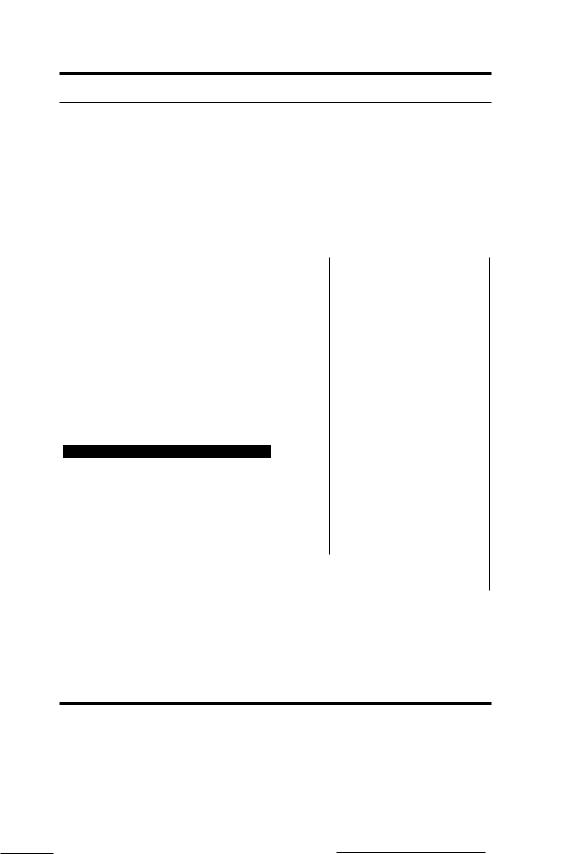
150 |
ACADEMIC WRITING FOR GRADUATE STUDENTS |
"
TASK FOUR
Decide whether each verb in the table can be used for an indicative
(general summary) location statement, an informative statement
(highlighting a specific aspect of the data), or both. Use the two sentences that follow the table to help you make your decision. Mark each box in the table with a Y for yes if the usage is possible and an N for No if it is not possible. The first two have been done as examples.
|
|
|
|
|
|
|
|
|
|
|
|
Y |
|
|
|
show |
|
|
|
Y |
|
|
|
I |
|||||
|
c-_._______________ _______ |
j _______ " ____________ |
||||||||||||
|
provide |
|
|
|
Y |
|
|
N |
|
|
||||
|
~----------- |
|
|
|
|
r |
------,-------+ |
---------- |
|
'----- |
|
1 |
||
|
give |
|
|
|
|
|
|
|
|
|
|
|
||
|
present |
|
|
|
|
|
|
|
|
|
|
|
||
|
-··----- |
|
'-r----- |
"------------ |
|
|
|
I~-------------- |
|
I |
|
|||
|
summarize |
|
|
|
|
|
|
|
|
|
|
|
||
-------- |
illustrate |
|
|
---- |
,,~-,-,,------~"'---------- |
.------- |
__1 |
|
||||||
|
|
|
|
|
|
|
|
|
|
|
|
|||
|
reveal |
|
|
|
|
|
|
|
|
|
|
|
||
|
,,- ,--------,,-_.,-+-,_._ |
,----------1 |
|
|||||||||||
------ |
indicate |
|
||||||||||||
|
|
|
|
|
|
|
|
|
|
|
|
|||
|
display |
|
|
|
|
|
|
|
|
|
|
|
||
|
demonstrate |
|
|
|
|
|
|
|
|
|
|
|
||
|
|
|
|
,---+,-------------j |
||||||||||
--------------------- |
suggest |
|
|
|
||||||||||
|
|
|
|
|
|
|
|
|
|
|
|
|||
|
___,________,,"'-",_,.___________ J _____,___.______--'.. ... |
|||||||||||||
|
|
The table |
|
|
|
the effect of social networking use on the |
|
|
||||||
|
|
duration of students' study time. |
|
|
|
|
|
|||||||
|
|
The table |
|
|
|
that social networking has little, if any, |
|
|
||||||
|
|
effect on the duration of students' study time. |
|
|
|
|||||||||
UPTUI
We looked at Ken Hyland's (2004) corpus of 80,000 words from 80 research articles in Biology, Physics, Electrical Engineering, Mechanical Engineering, Marketing, Applied Linguistics, Sociology, and Philosophy to determine

4: DATA COMMENTARY |
I 51 |
which verbs are mosr frequently used in full sentences to refer to figures and tables (Hyland, 2004). Table 6 shows the results of our analysis. All the verbs
were in the present tense.
TABLE 6. Active Verbs Following Reference to a Visual
|
Reference to Figure |
Reference to Table |
Total |
shows |
31 |
15 |
46 |
presents |
6 |
7 |
13 |
illustrates |
7 |
3 |
10 |
summarizes |
2 |
4 |
6 |
demonstrates |
2 |
3 |
5 |
contains |
0 |
5 |
5 |
provides |
0 |
3 |
3 |
depicts |
2 |
0 |
2 |
lists |
0 |
2 |
2 |
reports |
0 |
2 |
2 |
TOTAL |
|
|
94 |
|
|
|
|
Hyland, 2004. |
|
|
|
We then looked at verbs in the passive voice in references to figures and tables. The results are given in Table 7.
TABLE 7. Passive Verbs in Reference to a Visual
|
|
Reference to Figure |
Reference to Table |
Total |
shown in |
21 |
23 |
44 |
|
illustrated in |
29 |
5 |
34 |
|
presented in |
|
2 |
10 |
12 |
|
||||
given in |
|
2 |
4 |
6 |
listed in |
|
0 |
6 |
6 |
seen in |
|
3 |
|
4 |
provided in |
|
|
3 |
4 |
summarized in |
|
|
3 |
4 |
seen from |
|
3 |
0 |
3 |
TOTAL |
|
|
|
117 |
|
|
|
|
|
Hyland, 2004.

152 ACADEMIC WRITING FOR GRADUATE STUDENTS
I~ Language Focus: Linking as Clauses
So far, we have used sentences in which the reference to non-verbal data is either the subject or the agent in the main clause. However, another common way to introduce informative statements is the linking as clause. Here
are some examples.
As shown in Fig. 1 and Fig. 2, the companies used in this survey varied significantly in geographical location, size, and method of operation.
As can be seen in Table 6, the overall rate of recall, while low, also showed considerable variation.
Shallow junction GM APDs, peripheral area test structures, and gate-controlled diodes, as shown in Figs. 1(a), 1(b), and 1(c), were manufactured in p-type epitaxially grown bulk silicon using a conventional 1.5 um CMOS process reported previously.
As can be seen in Figure 1, the fully charged Lithium-ion battery supplies 4.2 volts.
These linking clauses (where as does not mean the same thing as since or becanse) are exceptional in English grammar. In the passive, these linking clauses have no subjects. Compare the following sentences.
a.As it has been proved, the theory may have practical importance.
b.As has been proved, the theory may have practical importance.
In Sentence a there is a causal relationship between the as clause and the main clause. Because the theory has been proved, it may have practical importance. In Sentence b the as clause serves to suggest that rhe practical importance of the theory (not just the theory) has been established. Although you may find examples that run contrary to this advice, remember
not to use subjects in passive linking as clauses.
Finally, using prepositions with this rype of linking statement can be
tricky. Here are some of the main standard uses.
in As shown in Table 1 ....
by As predicted by the model ....
on As described on the previous page ....

4: DATA COMMENTARY |
153 |
|
|
TASK FIVE |
- |
||
|
|
|
|
Fill in the blank with an appropriate preposition.
1. |
As can be seen _____ Figure 4, earnings have decreased. |
||
2. |
As predicted |
the model, there is a strong positive |
|
|
relationship between water loss and gas uptake (Fig. 1). |
||
3. |
As described |
the previous section, there are two |
|
|
common types of abstracts. |
|
|
4. |
As defined |
the introduction, fraud is a form of |
|
|
intentional deception resulting in injury. |
||
5. |
As reported |
the previous literature, factors that |
|
|
affect electrode adhesion during the chlorination process are the |
||
|
average grain size and the pore density in the Agel thin film. |
||
6. |
As can be seen |
a comparison of the two tables, |
|
|
peak oxygen uptake and exercise capacity are reliable predictors |
||
|
of quality of life. |
|
|
7. |
As has been demonstrated previously |
materials |
|
|
_____ this type, small cracks pose a serious problem. |
||
S. As has been demonstrated |
previous studies, |
||
|
organic polymer materials have advantages over inorganic |
||
|
substrates. |
|
|
9. |
As shown |
the line of best fit, there is no clear |
|
|
statistical relationship between fiscal costs and crisis length. |
||
10. |
As noted |
our discussion, prolonged exposure to |
|
|
morphine also produces apoptosis in cell culture. |
||
|
|
|
|
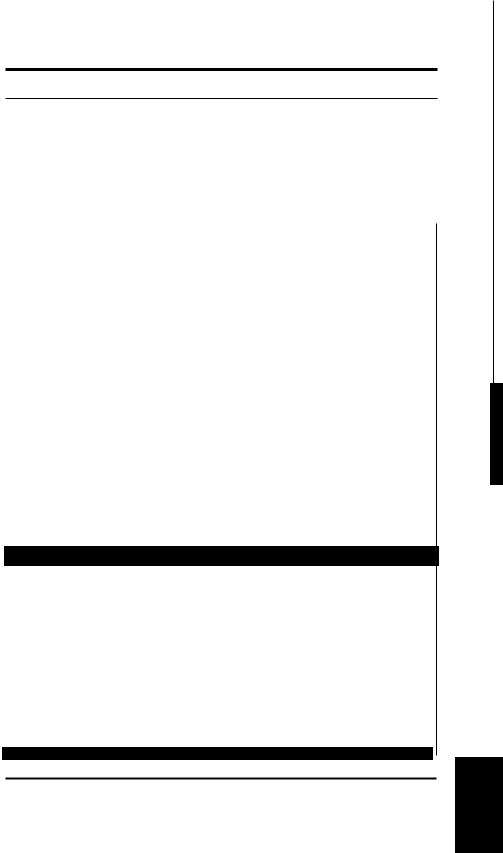
154 |
ACADEMIC WRITING FOR GRADUATE STUDENTS |
TASK SIX
Look at two or three journal articles, preferably in your field of stndy and possibly those you used in Task Nine in Unit One, that present some data in visual form. How do the results in your tables compare with the information provided about data commentary so far? In which section or sections of the article did you find the commentary on the data? Complete the table.
'1---------- |
|
|
.------ |
|
,-'--- |
|
|
|
|
|
|
|
|
|
|||||
Element |
|
|
|
|
|
Yes or No? |
|||
|
|
|
|
|
|
|
|
|
|
Location Statements |
|
|
|
|
|
|
|
||
|
|
|
|
|
|
|
|
|
|
f--,-~--,.----- |
:::--:;-.----- |
.---- |
+--- |
."------ |
.-,---. |
||
Imperatives (e.g., see |
Fig. 1) |
|
|
|
|
|
|
r--:~7""c--'------- |
'------ |
|
~.-.------- |
|
|
||
Parenthetical phrases |
(Fig, 7) |
|
|
|
|
|
|
Present tense active |
|
|
|
|
|
|
|
|
|
|
|
|
|
|
|
Present tense passive |
|
|
|
|
|
|
|
IExamples 01 possible uselullanguage ----r------ |
|
.--- |
.,----------- |
||||
f:---.---,--,-~-.---".-- ------ |
_ . ----- |
, --- |
language that softens or strengthens claims

4: DATA COMMENTARY |
155 |
Now that you have done a bit of analysis, in this next task we ask you to add
to a data commentary on the strategies of Japanese researchers writing in
English.
W!fWP i
TASK SEVEN
The following data commentary, which is based on Dr. Akiko Okamura's (2000) research on how Japanese researchers learn to write in English in their chosen field, is missing references to the non-verbal data given in Table 8. Expand the commentary by first starting with a location + summary statement and then by adding a suitable linking as clause. Review the material presented up to this point before you begin.
TABLE 8. Strategies Used by Japanese Scientists When Writing in English
|
|
Writing Strategy |
|
Percentage |
|
|||
|
|
|
|
|||||
|
|
|
|
|
|
|
|
|
Think mainly in Japanese but write in English |
61% |
|
||||||
|
|
|
|
|
|
|||
|
|
|
|
|
16% |
|
||
Think in Japanese and English but write in English |
|
|||||||
|
|
|
|
|
||||
Think in English and write in English |
23% |
|
||||||
|
|
|
|
|
|
|
|
|
|
|
|
|
|
|
|
|
|
Okamura, 2000.
Slightly more than three-fourths of the scientists surveyed adopted writing strategies that involved the use of their first language. Moreover, less than a quarter appear capable of writing directly in English. Overall, the figures would appear to suggest that most Japanese scientists have difficulties and frustrations when preparing papers for English-medium journals.
= |
ID |
ill |
|
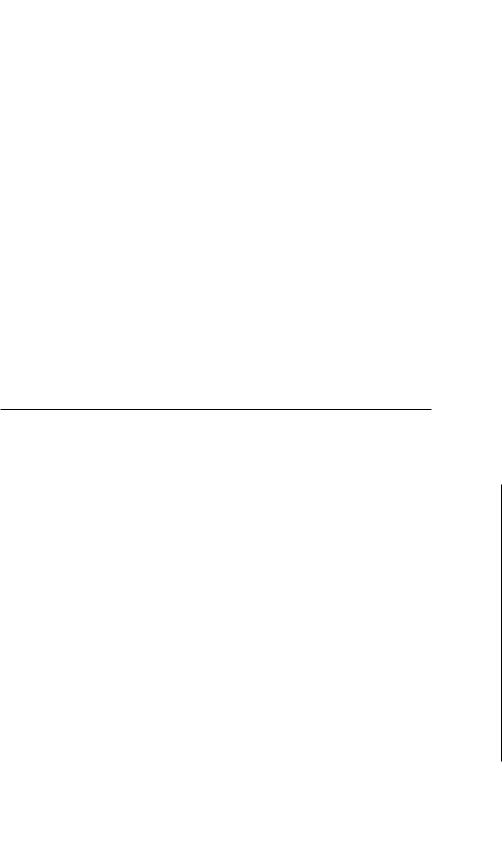
156 |
ACADEMIC WRITING FOR GRADUATE STUDENTS |
Highlighting Statements
The central sections of data commentaries consist of highlighting statements. Highlighting statements are points that can be supported by the details of the data. We have already seen some examples in the text that accompanies Task Two. Highlighting statements need good judgment. They are an opportunity to show your intelligence. In particular, they are an opportunity for you to demonstrate that
•you can spot trends or regularities in the data.
•you can separate more important findings from less important ones.
•you can make claims of appropriate strength.
Try to avoid
•simply repeating all the details in words.
•attempting to cover all the information.
•claiming more than is reasonable or defensible.
~\ Language Focus: An Introduction to Qualifications and ~ Strength of Claim
We said earlier that highlighting statements need good judgment. They also need good presentation of judgment. Thus, they have two requirements. One is the need to be cautious-and sometimes critical-about the data. As Skelton (1988) neatly observed, "It is important for students to learn to be confidently uncertain." The other requitement is to have the linguistic
resources to express this caution. In this section, therefore, we deal with ways
of qualifYing or moderating a claim and indicating your stance toward your
claims. Your stance or perspective is important in academic writing because
it allows you to reveal not only what you know, bur also what you think. The way in which you reveal your stance contributes to author positioning.
To reveal your stance, you can, for instance, indicate your attitude (for exam-
ple, I think); soften or hedge your claim as in it is likely that; or employ boosters to strengthen your points such as clearly there is a need to. These stance markers are part of your textual or disciplinaty voice (Hyland, 2008). Control
of this voice is "central to building a convincing discourse" and integral to
"texts that plausibly represent an external reality" (Hyland, 2008) and antici-
pate readers' reactions to those texts.
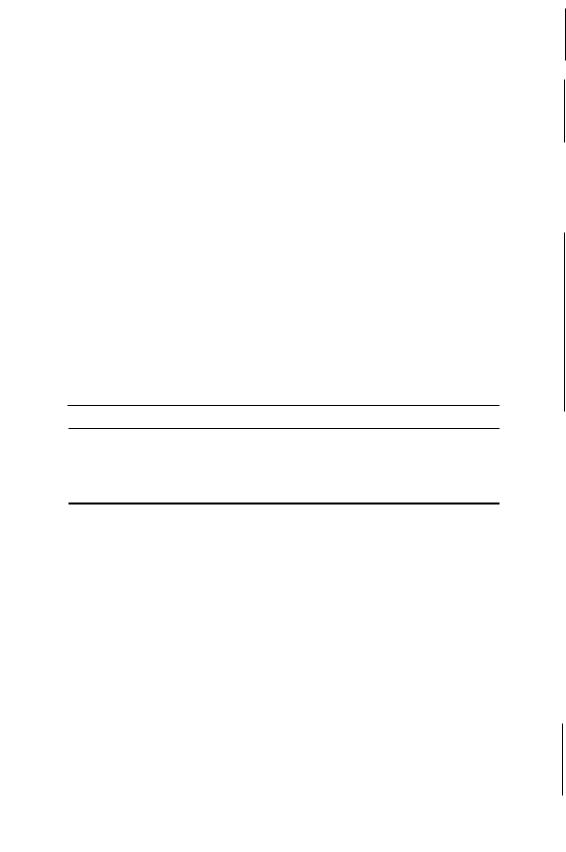
4: DATA COMMENTARY |
157 |
Although you might think that stance, and moderating your claims in particular, is important in only some fields, research shows that thoughtful, careful presentation of claims is characteristic of all fields-even those that are thought to deal with objective facts. Table 9 shows three types of stance markers identified in Hyland's corpus of 240 published research articles from eight disciplines.
TABLE 9. Stance Features by Discipline (per 1,000 words in journal articles)
|
|
|
Applied |
|
|
|
Mech. |
Elect. |
Avg. |
Feature |
Philosophy |
Sociology |
Ling. |
Marketing |
Physics |
Biology |
Engin. |
Engin. |
|
|
|
|
|
|
|
|
|
|
|
Hedges |
18.5 |
14.7 |
18.0 |
20.0 |
9.6 |
13.6 |
8.2 |
9.6 |
14.5 |
|
|
|
|
|
|
|
|
|
|
Attitude |
8.9 |
7.0 |
8.6 |
6.9 |
3.9 |
2.9 |
5.6 |
5.5 |
6.4 |
Markers |
|
|
|
|
|
|
|
|
|
|
|
|
|
|
|
|
|
|
|
Boosters |
9.7 |
5.1 |
6.2 |
7.1 |
6.0 |
3.9 |
5.0 |
3.2 |
5.8 |
|
|
|
|
|
|
|
|
|
|
Stance |
37.1 |
26.8 |
32.8 |
34.0 |
19.5 |
20.4 |
18.8 |
18.3 |
26.7 |
|
|
|
|
|
|
|
|
|
|
Adapted from Hyland, 2004.
i lill lilT n |
mu |
l In I U~ |
jli!W§j:l |
TASK EIGHT
Discuss Table 9 with a partner. What is interesting or possibly relevant? List a few observations and be prepared to share these with your class.
Now let us look at Task Nine to see how two student writers attempted to
present their claims in a manner that is suitable for a course paper.
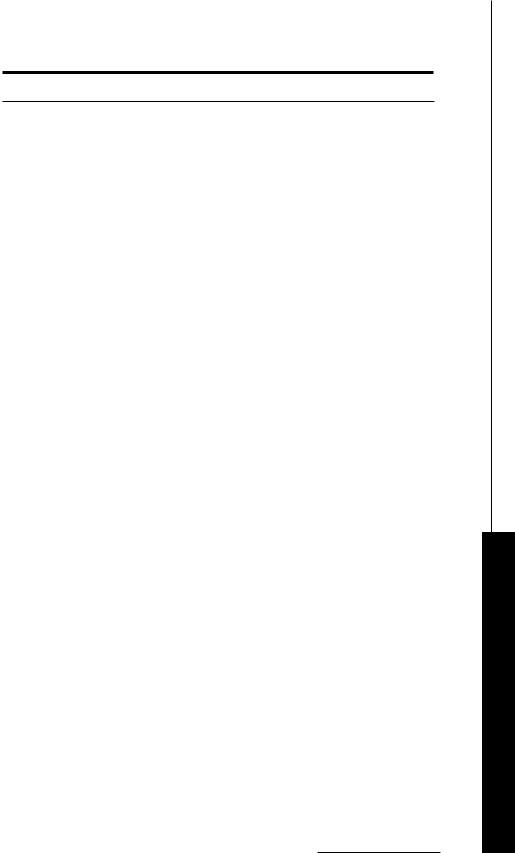
158 |
ACADEMIC WRITING FOR GRADUATE STUDENTS |
TASK NINE
Read the data commentaries from MICUSP that were written by two different students, the first a doctoral student in Psychology and the second a graduate student in Operations Engineering.
Underline the words or phrases that seem to express caution in making a claim. Circle language that boosts any claims.
A.0 There are a number of explanations for why musicians have superior cognitive abilities to non-musician controls. f} First, it
is possible that only the more intellectually rigorous people con· tinue with music training once they have been exposed to it.
@} Practicing a musical instrument takes a tremendous amount of discipline. Individuals who are willing to work that hard may also work hard in academic settings, thus improving their cognitive abilities. 0 Secondly, socio-economic class could be playing a role. 01n a study comparing scholastic aptitude among musicians and non-musicians, Phillips found a difference in the two groups, but once socio-economic class was taken into account the difference nearly disappeared (Phillips, 1976). 01t is pOSSible that the differences between musicians and non-musicians is actually innate or caused by something not musically related in the environment.
MICUSP File PSY.G 1.03.1
B.0 The overall size increase in many of the speedometer design parameters between speedometer set A to set B seems to have accounted for the overall lower average response times and lower average error and miss percentage rates. 8 However, other design differences, such as location of the speedometer on the instrument display panel, did not have such influential effects on the data. @} Comparing speedometers 1 and 4 (speedometer on left Side) to speedometers Z and 3 (speedometer on right side) only one small pattern was seen.
o Speedometers Z and 3 had, compared to their respective
speedometer set, slightly lower average response times than
